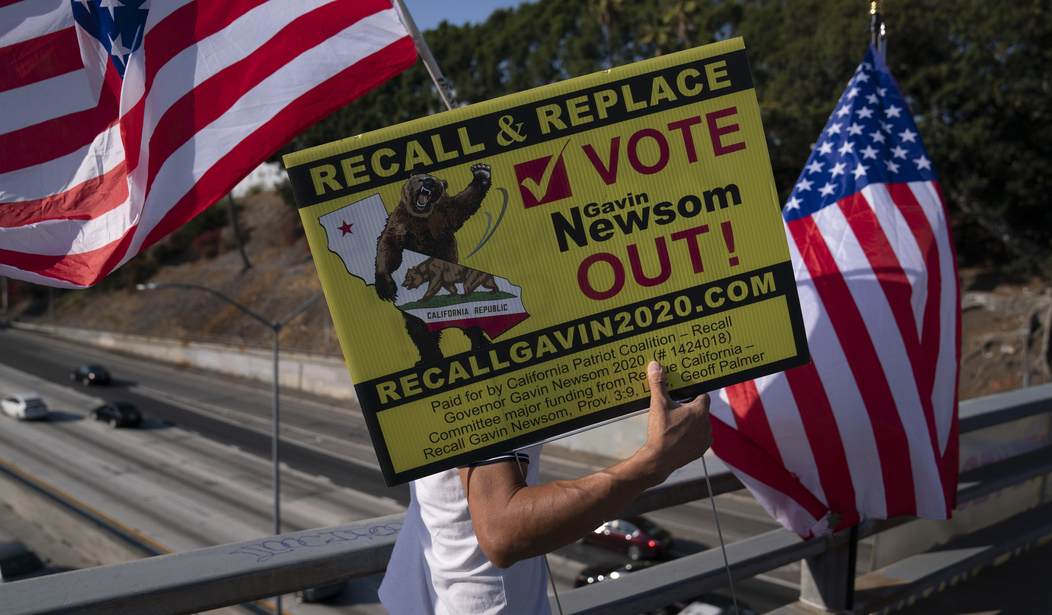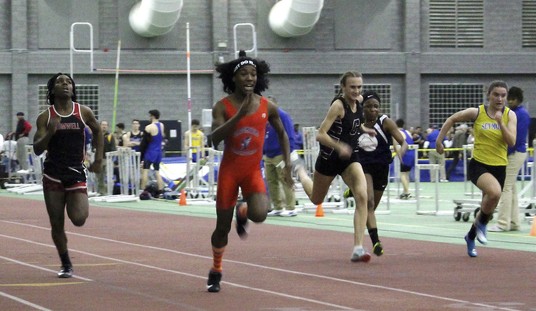Preliminary results are in from the California gubernatorial recall election and, as announced 20 minutes after the polls closed, we didn’t win. Why? I agree with Kurt Schlichter, who said that it wasn’t because of fraud or because the fix was in, despite what some blue checks on Twitter who either don’t live in California or who left it and want to justify their decision say. Was there fraud? Yes. I’ve spoken to election attorneys who have uncovered various instances of fraud and who will be pursuing legal action on that fraud. More specifics aren’t available at this time because, as one attorney told me, “We don’t talk about it because I’m not General Milley.” But blaming the loss on election fraud or some kind of massive conspiracy is simply a way to avoid accountability for what happened and to excuse not doing anything to change the paradigm here in California.
So, why did the recall fail? Here are the key factors.
1. The Message Wasn’t Focused on Newsom’s Failures
In early July, before the full slate of candidates was certified, I wrote about what the recall election was about and what needed to be done to win:
This election is about what Gavin Newsom has done to this state over the last 10 years and, in particular, the last two years, without remorse, and without concern for the lives destroyed. This election is about helping our friends and family and neighbors who are frustrated about the surge in crime, the unscientific lockdowns, the destroyed businesses, and the continuing surge in homelessness and its attendant societal effects fully understand that it is Gavin Newsom’s policies that led to this.
The failure to accomplish this goal is the main reason the recall failed. We always knew that Newsom’s strategy was going to be to deflect from his terrible record and corruption and blame the recall on Republicans, insurrectionists, and Donald Trump. That’s been the strategy as far back as January, while the recall proponents were still gathering signatures. When Larry Elder joined the race it was easy for Newsom to make the race about Elder, and the state’s mainstream media had no problem with that strategy. That’s not in any way a bash on Elder as a person; it’s simply data. Some Republican candidates continually bashed other candidates instead of Newsom, which also took the focus off of Newsom’s failures.
2. There Was No strategy to Win Question 1
California’s September 14 recall ballot contained two questions: 1) Should Governor Gavin Newsom be recalled? 2) Which candidate should replace Gavin Newsom if he is recalled? While voters answered both questions at the same time, Question 2 only mattered if more than 50 percent of Question 1 voters answered “yes.” That means that the big focus and strategy for recall proponents needed to be on getting to 50 percent plus one on Question 1.
To get the necessary votes on Question 1, proponents needed to build coalitions with the groups most negatively affected by Newsom’s policies: parents of public school students, small business owners, independent contractors/freelancers, people for common-sense medical and masking guidelines, rural voters affected by wildfires, fiscal conservatives, farmers who can’t get enough water to grow their crops, etc. Each group would rally its members with targeted messaging hammering the anti-Newsom message and leading people to the polls. In addition, the various pro-recall organizations, instead of being siloed, needed to coordinate their efforts with each other and with the California Republican Party for maximum effect. Instead, each group was left to their own devices, underfunded, and the shotgun approach really didn’t move the needle.
And, what was the California GOP’s strategy? I know there was a concerted effort to make voter contacts to get them to the polls. Party delegates (including myself) voted for the party to not endorse a particular replacement candidate so party resources could be used simply to persuade voters to a “yes” on Question 1 and turn them out. I received a great deal of candidate mail, mostly from Kevin Faulconer, in the weeks before the CAGOP endorsement vote, and a couple of pieces once ballots dropped. Yet, in the final two weeks I didn’t receive a single piece of mail urging a yes on Question 1 or a single contact from CAGOP asking me to get my ballot in. Granted, I have voted in every single election so it was probably assumed that I’m the type of voter who will get my ballot in, but it’s inexcusable that I wasn’t contacted once.
3. Polls Were Used to Suppress Votes and Shape Opinion
The biggest shift in the race occurred in early August when a pair of polls were released, one showing Newsom in real danger of being recalled and the other showing Larry Elder as the likely winner of the replacement candidate vote. Prior to the vote UC San Diego political scientist Thad Kousser told Cal Matters:
“There are two ways in which the polls, potentially, not only reflected but shaped the campaign: One was through this creation of crisis, which motivated Gavin Newsom’s donors, his political allies and his base.
“The second and perhaps more important thing was the polls over the past month have made it clear that Larry Elder would be the next governor, if the recall is successful. Since then Gavin Newsom seems to be gaining ground. Those two facts are not unrelated.”
At the end of August more polling – some with questionable methodology – was released showing Newsom easily beating the recall, which led to some pro-recall voters deciding to sit it out. In the same CalMatters article, UCLA political scientist and public opinion researcher Matt Barreto blamed the media for amplifying bad polls:
“People in your industry don’t put any effort into it,” he told CalMatters. “A really poor quality poll comes out…and you think, ‘This is a contrarian story, let’s start repeating this!’ Instead, people should have looked at it and laughed it out of their news feed.”
It’s not realistic to expect average voters to be more sophisticated consumers of polling data; the groups referenced in point two above need to be able to communicate what the poll results mean and explain to voters why a certain poll is flawed.
4. The “It’s Rigged” or Loser Mentality
Even before the recall qualified for the ballot, a significant number of conservatives said Newsom would never be recalled because “the system” wouldn’t allow it. Most even doubted that “the system” would allow the recall to be qualified, believing the Secretary of State would find a way to disqualify so many signatures that it could be claimed that the petitioners didn’t present enough valid signatures. Once the election date was set, the refrain changed – now the “smart” people “knew” that no fair election could ever be held in California, and even before election day the blue check brigade was claiming defeat. How many people stayed home because of that? We don’t have the answer yet, so this one is obviously speculative on my part, but I hope the surveys of those who didn’t vote will be done and we can find out why.
5. $100 Million
Gavin Newsom and his allies raised and spent $100 million from July through September 14, bombarding Californians with mailers, TV ads, radio ads, social media ads, and funding a robust ballot harvesting enterprise. Californians couldn’t escape the blitz of ads containing claims that even AP deemed false, and the worthless California Fair Political Practices Commission didn’t do a damn thing. But whether or not the ads had false information, they predicted a wave of death and destruction should Gavin Newsom be recalled, and they worked.















Join the conversation as a VIP Member